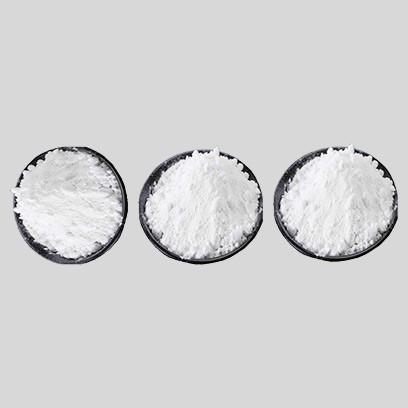
Nov . 05, 2024 07:28 Back to list
titanium dioxide for coatings
The Role of Titanium Dioxide in Coatings Properties, Applications, and Innovations
Titanium dioxide (TiO2) has emerged as a cornerstone material in the coatings industry due to its remarkable properties and versatility. As a white pigment, it has been widely used in paints, coatings, and inks not only for aesthetic purposes but also for functional characteristics that enhance performance. This article delves into the properties of titanium dioxide, its applications in various coating sectors, and the ongoing innovations that are setting new standards in the industry.
Properties of Titanium Dioxide
Titanium dioxide is renowned for its brilliant white color and exceptional coverage. Its high refractive index allows it to scatter light effectively, making it an excellent pigment for achieving opacity and brightness in coatings. Beyond its visual appeal, TiO2 possesses excellent durability and weather resistance, making it ideal for outdoor applications.
The chemical stability of titanium dioxide is another significant advantage, ensuring that coatings maintain their integrity over time, even when exposed to harsh environmental conditions. Additionally, TiO2 exhibits photocatalytic properties, enabling it to break down organic pollutants under UV light. This attribute not only contributes to the self-cleaning capabilities of coatings but also plays a role in promoting indoor air quality by reducing harmful volatile organic compounds (VOCs).
Applications in Various Sectors
Titanium dioxide is used across a wide range of coating applications, including architectural, automotive, industrial, and marine coatings. In architectural coatings, TiO2 provides a long-lasting finish that withstands the rigors of exterior elements while maintaining its color and gloss. Its reflective properties also help in reducing energy costs by reflecting UV and infrared rays, thereby keeping buildings cooler.
In the automotive industry, manufacturers rely on titanium dioxide to deliver high-performance coatings that protect vehicles from scratches, corrosion, and UV degradation. The automotive sector often demands coatings that combine aesthetic appeal with functionality; the incorporation of TiO2 allows for vibrant colors that are also durable and weather-resistant.
titanium dioxide for coatings

Industrial coatings, often subjected to extreme conditions, benefit immensely from titanium dioxide's robust properties. Whether in manufacturing or protective applications, TiO2 provides enhanced chemical and abrasion resistance. Furthermore, in the marine sector, the anti-fouling properties of TiO2-based coatings help to protect vessels from barnacles and other marine growth, thus improving fuel efficiency and reducing maintenance costs.
Innovations and Future Trends
As industries continue to demand higher performance and more sustainable solutions, innovations surrounding titanium dioxide are evolving rapidly. Research into nanostructured forms of TiO2 has opened new pathways for enhancing the properties of coatings. Nanoparticles can lead to improved dispersion, lower viscosity, and better mechanical properties, allowing for thinner and more efficient coatings.
Sustainability has also become a pivotal focus in the coatings industry. The development of TiO2 formulations that minimize the impact on the environment is paramount. For instance, the integration of TiO2 with bio-based resins is on the rise, which not only enhances performance but also reduces carbon footprints.
In addition to novel formulations, there is growing interest in the multifunctionality of TiO2. Coatings that incorporate TiO2 not only serve aesthetic purposes but also offer antimicrobial properties, reducing the growth of bacteria and enhancing hygiene in healthcare settings. The ongoing research into the photocatalytic properties of titanium dioxide is paving the way for self-cleaning surfaces, which have significant implications for both residential and commercial spaces.
Conclusion
Titanium dioxide is more than just a pigment; it is a catalyst for innovation in the coatings industry. With its stunning visual properties, exceptional durability, and versatility, it has earned a critical place in various applications ranging from architecture to automotive industries. As technological advancements continue to reshape the landscape, the future of titanium dioxide in coatings looks promising. Embracing sustainability and multifunctionality will be crucial as manufacturers seek to meet the challenges of a dynamic market while ensuring performance remains at the forefront. By harnessing the full potential of titanium dioxide, the coatings industry is set to undergo a transformation that prioritizes both aesthetics and innovative functionality for a sustainable future.
-
Premium 6618 Titanium Dioxide for GPT-4 Turbo Applications
NewsJul.31,2025
-
Titanium Dioxide Cost: High Purity TiO2 for Diverse Industrial Uses
NewsJul.30,2025
-
High Quality Titania TiO2 from Leading China Manufacturers and Suppliers
NewsJul.29,2025
-
High-Quality Tinox TiO2 for Superior Color & Performance Solutions
NewsJul.29,2025
-
High Quality Titania TiO2 from Leading China Supplier & Manufacturer
NewsJul.29,2025
-
High-Performance r6618 TiO2 for Superior Whitening and Versatility
NewsJul.28,2025
